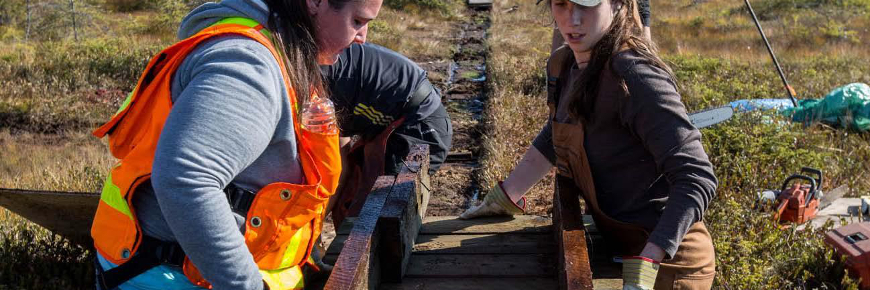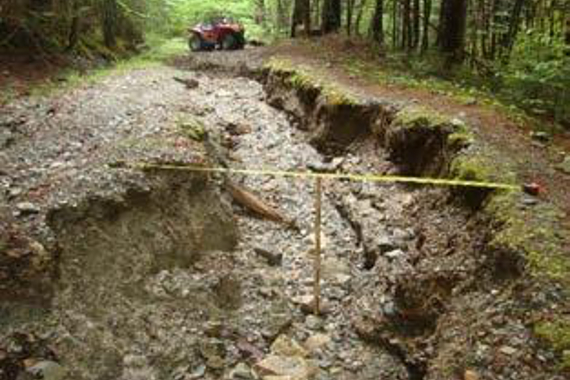
Students from the Maritime College of Forest Technology working with Parks Canada staff decommission and restore a closed portion of the Caribou Plain Trail. Photo: © Craig Norris
Trail to 2019
Restoring the trail network in Fundy National Park
What’s the issue?

When Fundy National Park was established in 1948, many existing cart paths and logging roads were simply repurposed as recreational trails for visitors. While this approach saved time and money early on, these trails have become unsuitable for modern-day use – being wider than necessary, susceptible to erosion, costly to maintain, and unattractive or unsafe for hiking and biking. Park staff also began to notice adverse ecological effects, including invasion by alien plants (Japanese knotweed), that impact native biodiversity, and poorly designed stream crossings that reduce water quality and degrade riverbank habitat. In response, Fundy took on the challenge of redesigning an entire network of sustainable trails – a system to serve the recreational needs of visitors, encourage engagement in wise land-use management and restore ecological values – all before 2019.
What’s our approach?
- Consult with industry experts, partners and staff to design and construct a sustainable hiking and biking trail system.
- Reduce the overall trail footprint by 5,000 square meters by narrowing sections, removing unnecessary infrastructure such as boardwalks and pavement, and remediating areas by scarifying, mulching and planting native vegetation.
- Restore 25 km of unsustainable trails by redesigning and rebuilding trails to follow natural contours and slopes.
- Reduce the amount of habitat vulnerable to invasive plants such as Japanese knotweed to prevent further spread.
- Coordinate with infrastructure projects for trail restoration and achieve win-win gains.
What’s been accomplished?
- Collaborated with the International Mountain Biking Association on a sustainable trails workshop for park staff, regional stakeholders and volunteers.
- Decommissioned 56 percent of unsustainable trails (2,187 square meters) and planted more than 600 native trees in restored areas, including 65 red spruce saplings propagated from old-growth seed collected in Fundy.
- Began realignment and restoration of 16.4 km of trail to follow natural landscape contours; reduced the potential for erosion and improved the overall visitor experience.
- Prevented further spread of target invasive species like Japanese knotweed.
- Aligned restoration with infrastructure renewal projects to maximize the scope and benefits; a total of 52 km of trails will be restored or decommissioned by 2019.
- Date modified :